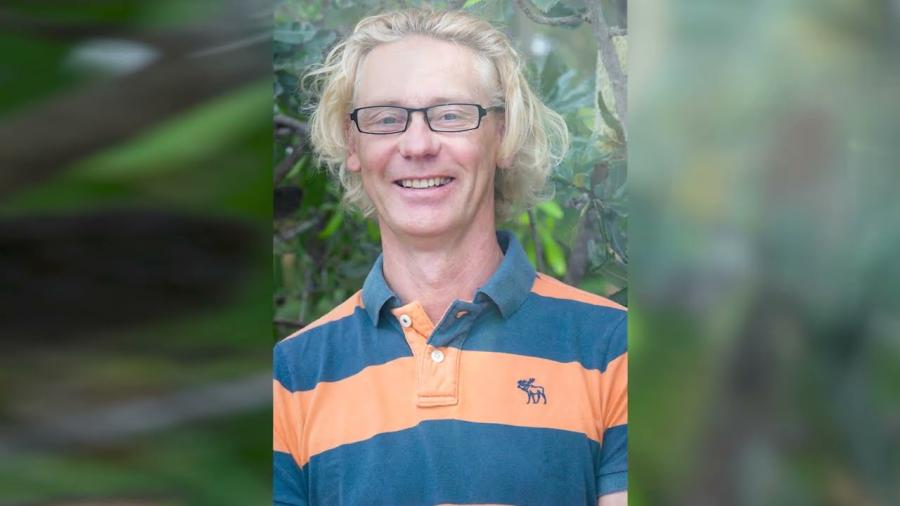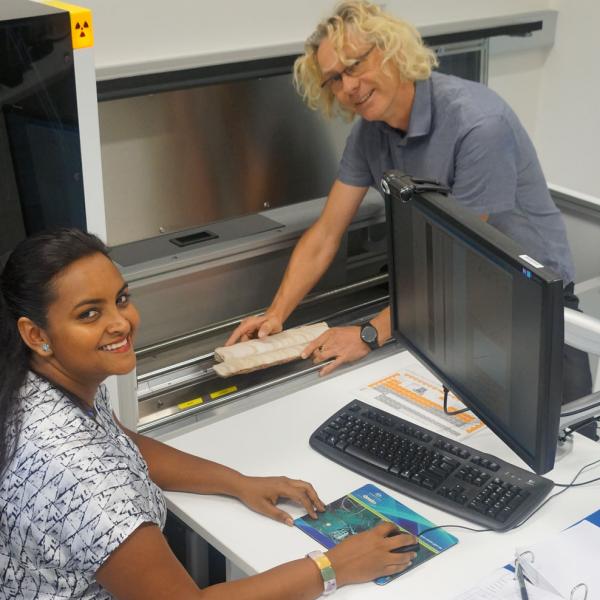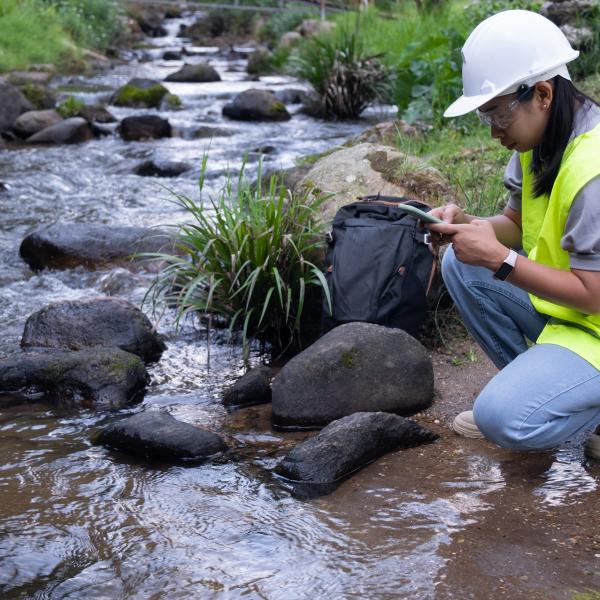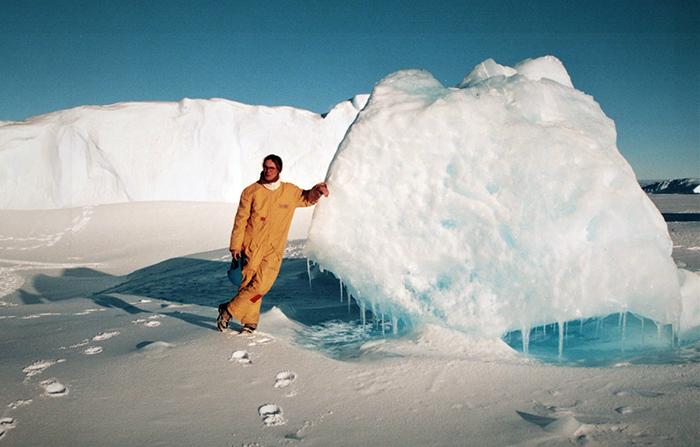
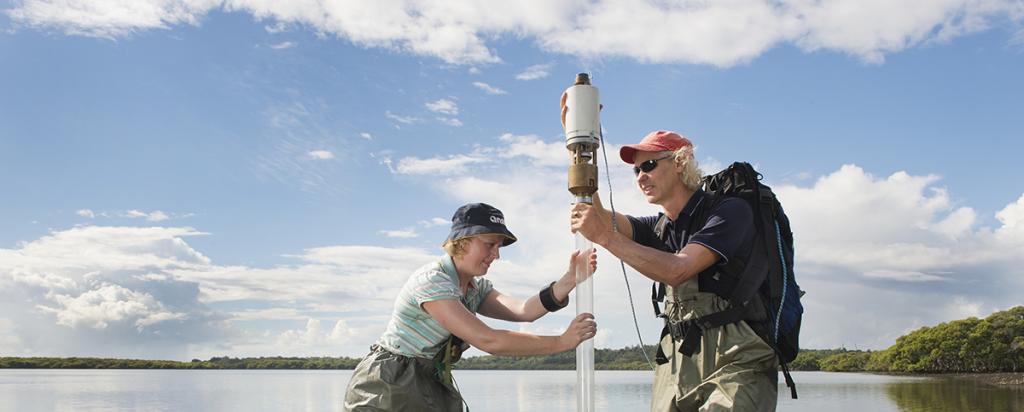
Published on the 23rd September 2021 by ANSTO Staff
With a passion for fieldwork and a lifelong commitment to scientific excellence in reconstructing the story of landscape and climate in Australia and other parts of the world, Hendrik ‘Henk” Heijnis has earned ANSTO’s CEO Award for a Sustained Contribution to the organisation.
In a career that has taken him to some of the most extreme environments on Earth, Henk knows that 70 per cent of the job gets done when you get the fieldwork right.
Now an Adjunct Professor who is semi-retired, he was one of the first scientists as ANSTO to request and be granted an approval to spend time away from the site collecting a range of samples, gathering proxy environmental records that capture the history of landscape and climate.
In a career that began with studies of pollen under a microscope and doing his PhD in isotope physics at the University of Groningen in the Netherlands, his collection of samples became more diverse over the years.
Henk has collected sediment cores from the Fjords near the Australian Davis Station in Antarctica and peat bog cores and sediment cores from coastal lagoons on the Galapagos Islands.

On the ice, Davis Station, Antarctica 1995
“There is only one opportunity to guarantee sample integrity and suitability and that is in the field.”
But it doesn’t end with good samples and data.
“Being able to interpret scientific results is very much linked to an understanding of landscape, having seen, smelled and felt a place. Being able to visualise how the information fits in the landscape is important in understanding what it is telling you,” explained Henk.
“Visualising or interpreting the results that might not be obvious can be challenging. Many students say 'I don’t understand the results'. I tell them to analyse the data thoroughly. It means something even if it conflicts with your perceived ideas. It doesn’t mean the results are wrong or useless. A negative result is still a result.”
In the close to 30 years Henk worked at ANSTO, he rose from laboratory manager to the Leader of all environmental research before his semi-retirement in 2021.
He is now a Director of the IAEA Collaborating Centre at ANSTO, where he coordinates regional scientific activities, training and collaboration.
Some early inspirational giants of scientists, the late Sir Nicholas Shackleton of Cambridge University, who was one of the first to use deep-sea records to gain information about ocean volumes and ice ages and the late Professor John Chappell of ANU, who made a significant contribution to toward understanding late Quaternary sea-level changes linking sea level, global ice volume and past climates, brought Henk’s focus to Quaternary Science.
Over his career Henk has made a significant contribution to this discipline, pioneering the use of nuclear techniques, such as isotope analysis and X-ray fluorescence scanning at ANSTO in environmental research.
He also played a key role in the establishment of the globally recognised environmental radioactivity measurement centre at the Lucas Heights campus.
He prefers his legacy to be the contribution to Quaternary science, because of its importance in helping us understand environmental changes.
Henk says the serious environmental challenges that Australia faces today with soil erosion, dwindling groundwater resources, massive changes to the landcover and the disappearance of native vegetation are related to a landscape that was modified over the relatively brief period of two hundred years since colonisation.
“But it is these challenges that have made Australia accomplished in the environmental sciences today,“ said Henk.
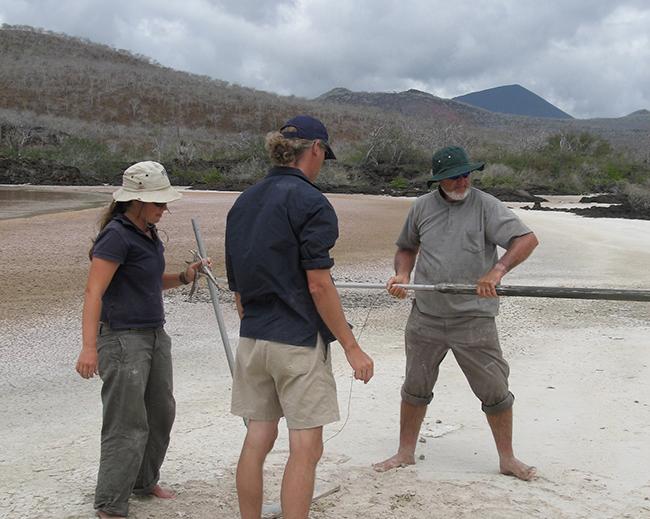
Collecting cores in the Galapagos Islands
Looking back to the early days at ANSTO, he appreciates the invitations he received from collaborators at the University of Wollongong and the University of Tasmania and others to join them in fieldwork.
Fieldwork has taken him to some of Australia’s most beautiful places in Australia, Lord Howe Island, Fraser Island, South West Tasmania and Kakadu National Park, where he has flourished in difficult and sometimes dangerous conditions.
However, it was often the interpersonal dynamics that were the most challenging in the field.
“Learning how to be a diplomatic leader and not a dictator was an important skill, “ said Henk.
“Experiences in the field are amplified very quickly because of the conditions. The pressure-cooker environment shows you how to get on with each other and get the work done.”
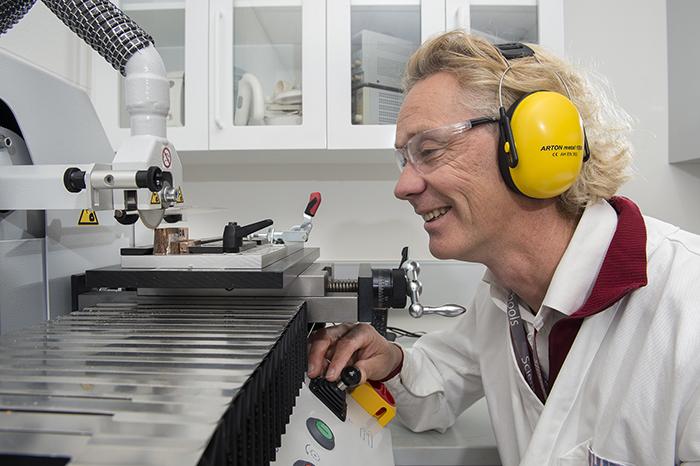
Examing cores on the ITRAX X-ray fluorescence scanner
Well-liked and deeply respected with great skills in science communication and networking, Henk has made a significant contribution to the Australia Institute of Nuclear Science and Engineering (AINSE) and the activities of the IAEA in the region.
More recently, he has been trying to lead associates in the region with significant cultural differences, to a slower, closer relationship to the environment.
In a country where scientists take a minibus to and from a field site, he shares his experiences and knowledge to make them better at fieldwork.
“Taking the time to go back if it is not right to get the best samples will save time and effort in the long run.”
Henk attributes his close relationship to nature to his early years on a bike cycling everywhere from his home in the Netherlands.
“You start to get an understanding of the landscape on a bike that you don’t get from a car,” said Henk.
That close relationship to landscape has him greatly concerned about the environment and climate, which was recently documented in a major climate report by the IPCC.
“We should be really worried about how the changes are going to affect the patterns of rainfall. Human activity has also brought an unprecedented amount of change to the landscape by the development of urban and suburban landscapes. It has had a massive impact on the environment, creating acidification problems and groundwater that cannot recharge quickly enough to keep up,” he said.
“The role of climate and landscape reconstructions will be crucial in preparing for the scenarios ahead,” Henk.
“As the author Richard Flanagan has pointed out environmental sustainability should be a priority.”
An author or co-author of more than 187 publications, a mentor to hundreds of students and co-workers, most at ANSTO would agree that Henk’s legacy of environmental research has set us on our best course to face this uncertain future.
